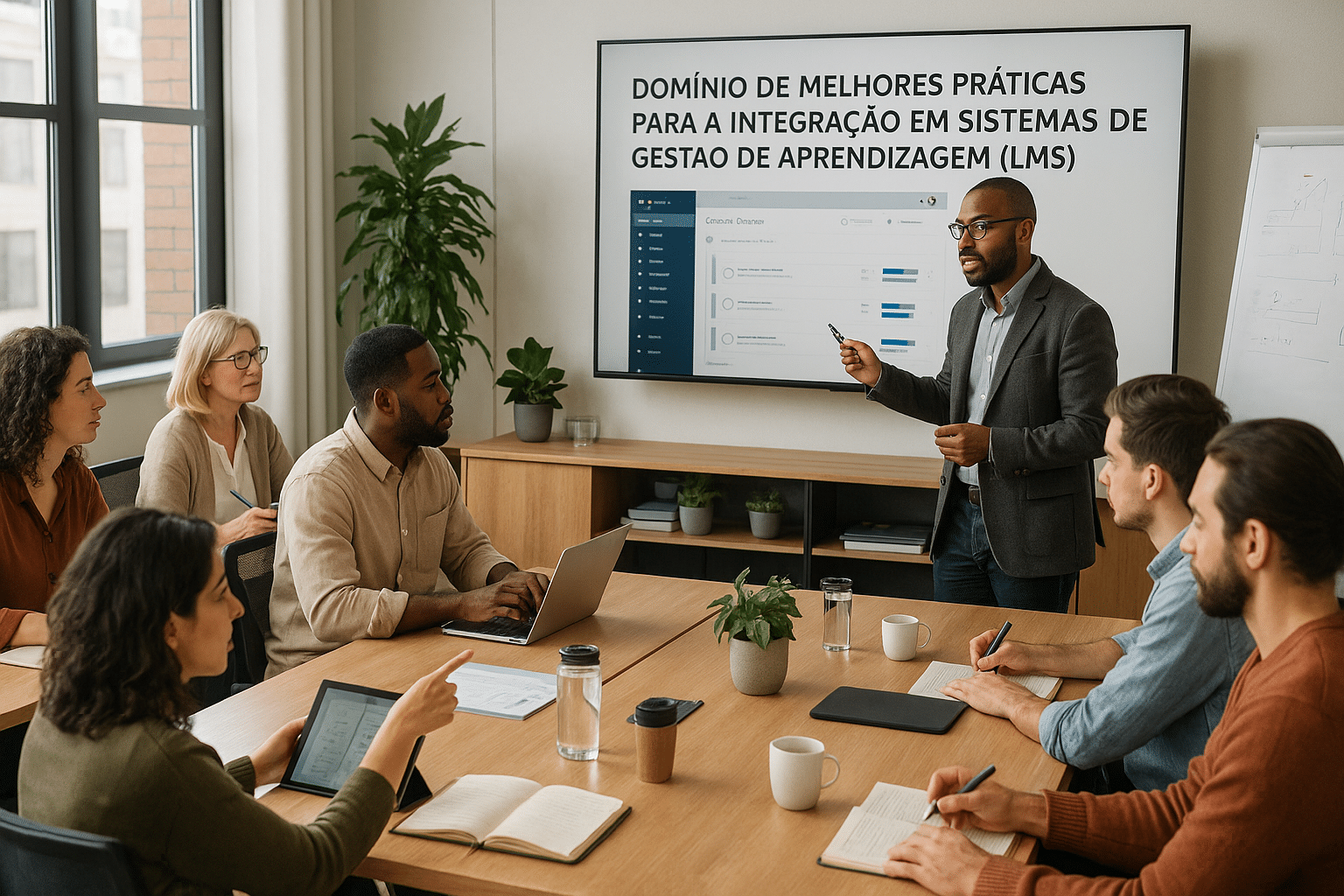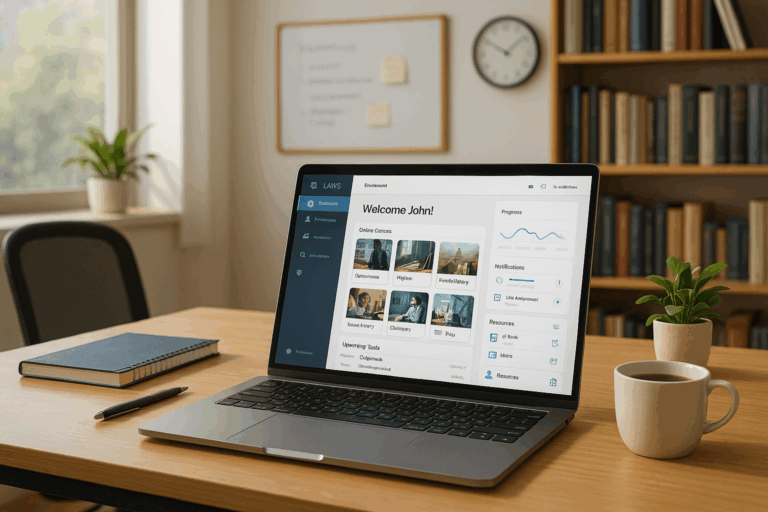Today, we’re diving into the multifaceted world of Learning Management Systems (LMS). Specifically, we’re going to unlock the secrets to successful LMS onboarding. This topic might seem dense or complicated, but rest assured, we’ll break it down to bite-sized pieces that you can easily digest. 🧩
As you probably know, an LMS is a digital platform that helps manage and deliver learning content. It’s a key player in the realm of eLearning and distance education, especially in today’s fast-paced, technology-driven world. But, as with most technological platforms, the success of an LMS isn’t just about its features or capabilities. The real key 🔑 lies in how it’s implemented, and that’s where onboarding comes in.
Onboarding is a critical process that sets the stage for how users interact with a new system. It’s the first impression, the welcome mat, the initial handshake between a user and the technology. A well-designed onboarding process can make the difference between a user who quickly abandons the system and one who stays, explores, and ultimately finds value in what the platform offers.
But how do you create a winning LMS onboarding strategy? That’s the million-dollar question we’ll tackle in this article. We’ll explore best practices for LMS onboarding, sharing tips and tricks that will help you drive user engagement, increase satisfaction, and optimize learning outcomes. Let’s get started! 🚀
Why LMS Onboarding Matters
The importance of proper LMS onboarding cannot be overstated. In this section, we’ll delve into why it’s so vital, and how it can make or break your LMS implementation. We’ll also touch on the common challenges associated with LMS onboarding and how to overcome them.
Best Practices for LMS Onboarding
Next, we’ll walk you through some of the best practices for LMS onboarding. These are time-tested strategies, techniques, and principles that have proven effective in a wide range of settings. This section will provide you with a roadmap 🗺️ to follow as you plan and implement your own LMS onboarding process.
Case Studies: LMS Onboarding Success Stories
We’ll then take a look at some real-world examples of successful LMS onboarding. These case studies will showcase the principles and strategies we’ve discussed in action, providing tangible evidence of their effectiveness. It’s one thing to talk about best practices, but seeing them in action can truly drive the point home. 🎯
Conclusion: Your Path to LMS Onboarding Success
Finally, we’ll wrap up with some parting thoughts and a call to action. We’ll revisit the key points from the article, summarize what we’ve learned, and provide some steps you can take right now to start improving your own LMS onboarding process.
Whether you’re a seasoned eLearning professional or a newcomer to the world of LMS, this article will provide you with valuable insights to make your LMS onboarding process smoother and more successful. So, sit back, relax, and let’s unlock the secrets to mastering LMS onboarding. 🎓
Unlocking Success: A Comprehensive Guide to LMS Onboarding Best Practices
Embarking on a journey with a Learning Management System (LMS) can be both exciting and challenging. The process of onboarding is a critical component, determining how smoothly your organization will adapt to the new platform. Therefore, mastering the best practices for LMS onboarding can unlock success and ensure a seamless transition. Let’s dive deeper into this topic and understand how to get the most out of your LMS implementation.
Before delving into the specifics, it’s essential to understand what exactly LMS onboarding entails. It’s the process of integrating a new LMS into an organization, which includes importing existing data, training staff to use the system, and customizing the software to match the organization’s needs. It’s a period of adjustment that, if done correctly, can drastically improve the way your organization manages and delivers learning content.
Now, let’s explore the best practices for a successful LMS onboarding, so you can optimize your organization’s learning and development strategy. We will tackle this in three main sections: Pre-Onboarding, During Onboarding, and Post-Onboarding. Each section is crucial to your success and demands careful planning and execution. In addition, we’ll pepper in some engaging videos for a more detailed understanding and useful tables for easy comparison and visualization.
Best Practices: Pre-Onboarding Phase
In the pre-onboarding phase, strategic planning is key. It’s the foundation upon which the entire onboarding process rests. Here, you’ll define your goals, prepare your team, and gather your data.
Firstly, it’s crucial to identify the specific goals you aim to achieve with your new LMS. These might include enhancing training effectiveness, improving learning accessibility, or streamlining administrative tasks. Having clear goals will guide your decisions throughout the onboarding process and provide a metric for evaluating success.
Secondly, preparing your team for the upcoming changes is vital. Ensure everyone understands the benefits of the new LMS and their roles in the onboarding process. Provide them with the necessary training and resources to feel comfortable and competent with the new system. Check out the video “How to Prepare Your Team for an LMS Implementation” by LearnUpon for practical tips and guidance.
| Pre-Onboarding Best Practices | Description |
|---|---|
| Identify Specific Goals | Define what you aim to achieve with the new LMS. This could include enhancing training effectiveness, improving learning accessibility, or streamlining administrative tasks. |
| Prepare Your Team | Ensure your team understands the benefits of the new LMS and their roles in the onboarding process. Provide them with the necessary training and resources. |
Nailing the Onboarding Process: During Onboarding Phase
During the onboarding phase, the primary focus should be on implementing the LMS and training the staff. Here, you’ll import your data, customize the LMS, and commence the user training.
Firstly, importing existing data into the new LMS can be a daunting task. But with careful planning and organization, it can be done efficiently. It’s important to clean up your data before the import to ensure only relevant and up-to-date information is transferred.
Secondly, customizing the LMS to fit your organization’s needs is a key step. This might involve adjusting the LMS’s aesthetics to match your brand, setting up user roles and permissions, or tweaking the system’s features and functionalities. Check out the video “How to Customize Your LMS” by eLearning Industry for step-by-step guidance.
| During Onboarding Best Practices | Description |
|---|---|
| Data Import | Import your existing data into the new LMS. Clean up your data before the import to ensure only relevant and up-to-date information is transferred. |
| Customize the LMS | Adjust the LMS’s aesthetics to match your brand, set up user roles and permissions, or tweak the system’s features and functionalities. |
Perfecting Your Strategy: Post-Onboarding Phase
In the post-onboarding phase, the focus shifts to refining the implementation, measuring success, and making necessary adjustments. Here, you’ll evaluate the onboarding process, gather feedback, and plan for continuous improvement.
Firstly, it’s crucial to measure the success of the onboarding process against the goals defined in the pre-onboarding phase. This will provide insights into the effectiveness of the onboarding process and pinpoint areas for improvement.
Secondly, gather feedback from your team to understand their experiences with the new LMS. This can help identify any issues or areas of confusion, allowing you to address them promptly. Don’t miss the video “How to Gather and Use Feedback in LMS Implementation” by eLearning Industry for valuable insights.
| Post-Onboarding Best Practices | Description |
|---|---|
| Evaluate Success | Measure the success of the onboarding process against the goals defined in the pre-onboarding phase. This will provide insights into the effectiveness of the onboarding process. |
| Gather Feedback | Collect feedback from your team to understand their experiences with the new LMS. This can help identify any issues or areas of confusion. |
Mastering the best practices for LMS onboarding can unlock success and ensure a seamless transition to your new platform. Remember, it’s a process that requires careful planning, execution, and continuous improvement. With these best practices, you’ll be well on your way to a successful LMS implementation and a more efficient learning and development strategy.

Conclusion
In conclusion, the aforementioned discussion highlights the various facets of Software Engineering, a field that has seen a significant surge in relevance in today’s digital age. As we delved into the complexities of this topic, we have discovered the various layers that make this field as diverse and fascinating as it is.
We’ve begun our journey by understanding the core concepts of Software Engineering, emphasizing its role in the creation, management, and optimization of software systems. We then explored the several methodologies that drive the software development process, including Waterfall, Agile, Scrum, and Lean methodologies. Each, as we found, has its strengths and weaknesses, and their selection largely depends on the unique requirements of the project at hand.
We also focused on the importance of software testing, a crucial phase that ensures the software’s functionality, reliability, and efficiency. In this context, we uncovered the different types of testing – unit testing, integration testing, system testing, and acceptance testing.
As we ventured further, we touched upon the subject of Software Maintenance and its importance in ensuring the software’s longevity. This led us to the discussion on Software Re-engineering, a process that revitalizes an existing software system, improving its performance and adaptability.
This journey has been an enlightening one, packed with insights that we hope have been of value to you. The world of Software Engineering is vast and ever-evolving, and its importance cannot be understated. Whether you are a budding software engineer, an IT professional, or someone simply interested in the subject, there is always something new to learn and explore.
Therefore, we encourage you to delve deeper into this field, whether by reading more articles, participating in online forums, or enrolling in courses. Here are some resources that can help you continue your exploration:
1. [IEEE Software Engineering](https://www.computer.org/technical-committees/software-engineering/) – An extensive repository of resources related to Software Engineering.
2. [Software Engineering Daily](https://softwareengineeringdaily.com/) – A daily podcast on Software Engineering topics.
3. [Software Engineering Stack Exchange](https://softwareengineering.stackexchange.com/) – A question and answer site for professionals, academics, and students working within the systems development life cycle.
4. [Coursera Software Engineering](https://www.coursera.org/courses?query=software%20engineering) – A list of online courses on Software Engineering.
We would love to hear your thoughts on this topic, so feel free to leave a comment below. Share this article with your peers and let’s broaden the conversation around Software Engineering.
Remember, the pursuit of knowledge is a rewarding journey, so keep learning, keep exploring, and keep growing. 😊👩💻👨💻🚀
References:
1. [Software Engineering: A Practitioner’s Approach](http://www.cs.st-andrews.ac.uk/~ifs/Books/SE9/) by Roger S. Pressman and Bruce R. Maxim.
2. [The Mythical Man-Month](https://en.wikipedia.org/wiki/The_Mythical_Man-Month) by Frederick P. Brooks Jr.
3. [IEEE Std 610.12-1990, IEEE Standard Glossary of Software Engineering Terminology](https://standards.ieee.org/standard/610_12-1990.html)
4. [ISTQB Glossary](https://glossary.istqb.org/) – A comprehensive glossary of terms used in the field of Software Testing.



